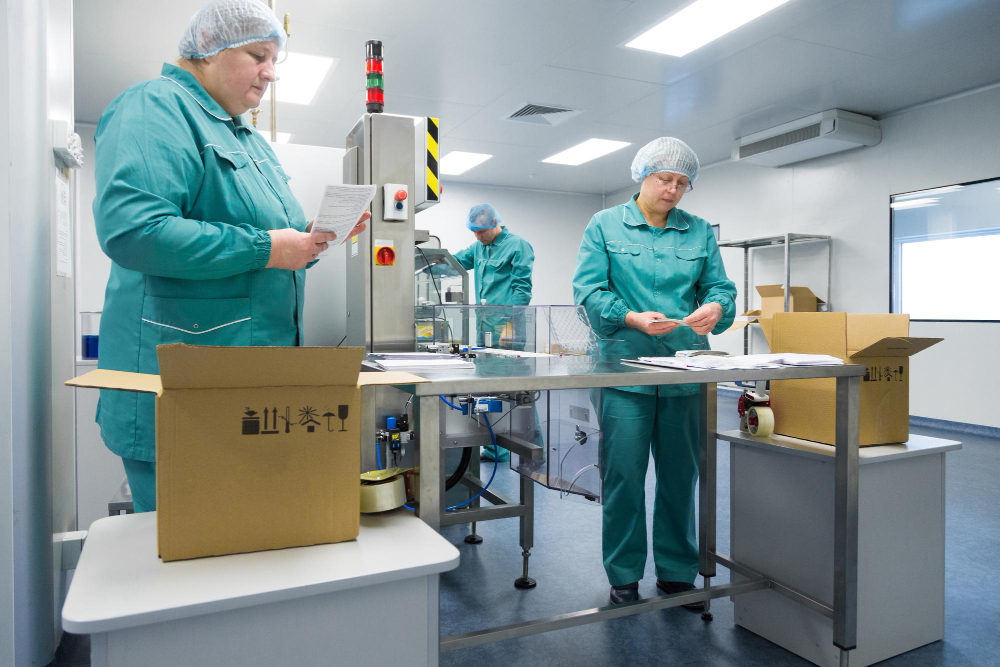Common Mistakes in Pharmaceutical Quality Checks
In the highly regulated pharmaceutical industry, quality control is a critical step in ensuring product safety and efficacy. Any slip-ups can lead to costly recalls, reputational damage, and even regulatory penalties. One company standing at the forefront of innovative quality control solutions is YB Systems, specializing in advanced visual inspection and automated tray counting technologies to help manufacturers avoid these pitfalls. But even with high-tech systems like the Counse platform, mistakes still happen. So, what are the most common errors in pharmaceutical quality control, and how can they be mitigated? Let’s dive deeper.
The Importance of Pharmaceutical Quality Control
Pharmaceutical quality control refers to the set of procedures that ensure every product meets the required standards before reaching the market. These checks cover every aspect of production, from raw materials to the final product. By adhering to stringent guidelines, pharmaceutical companies can guarantee that their products are safe, effective, and comply with regulations. Yet, despite these efforts, mistakes in the quality control process are frequent.
Overlooking the Role of Automation in Quality Control
One of the most significant mistakes in pharmaceutical quality control is underestimating the importance of automation. In a world where precision is non-negotiable, relying on manual checks increases the risk of human error. Manual processes are time-consuming and subject to fatigue, oversight, and inconsistency.
YB Systems counters this by offering automated tray counting and visual inspection solutions. These systems leverage cutting-edge technology to perform tasks with greater speed and accuracy than humans, significantly reducing the margin for error. Automation ensures repeatability, consistency, and reliability, all essential aspects of pharmaceutical quality control.
Inconsistent Inspection Procedures
Inconsistent or inadequate inspection procedures often lead to non-compliance. When companies rely on manual inspection, there’s always variability due to human factors such as experience, attentiveness, and fatigue. Not following a standardized approach can result in defective products slipping through the cracks.
Automating inspections with advanced visual technology, such as YB Systems’ Counse platform, standardizes the process across batches. With AI-driven systems, companies can ensure the same level of rigor and precision in every inspection, no matter the scale of production.
Failure to Monitor the Entire Production Line
Quality control doesn’t begin and end with the final product—it must be an ongoing process throughout the entire production line. A common mistake is neglecting checks at crucial intermediate stages, which increases the likelihood of defects or contamination.
Advanced visual inspection solutions can be integrated across the entire production line, enabling real-time monitoring at each step. This technology provides manufacturers with instant data, helping them identify and rectify issues before they escalate. This not only ensures compliance but also enhances the overall efficiency of the production process.
Ignoring Regulatory Updates and Compliance Changes
The pharmaceutical industry is tightly regulated, and regulatory bodies like the FDA frequently update their guidelines to incorporate new research, technologies, and safety protocols. Failing to stay current with these regulations is a costly mistake that can lead to product recalls, fines, and damaged reputations.
Pharmaceutical quality control teams must ensure that all processes, inspections, and technologies are in line with the latest regulatory standards. YB Systems’ automated systems offer built-in compliance features, automatically updating parameters to meet evolving regulations. This minimizes the risk of non-compliance and helps maintain industry standards.
Mismanagement of Data and Documentation
In the pharmaceutical industry, accurate documentation is just as crucial as the product itself. Any lapse in documentation, whether it’s incomplete records, inaccurate data entries, or lost paperwork, can lead to regulatory scrutiny and even delays in product release.
Automated systems like those offered by YB Systems make data management seamless. The Counse platform captures real-time data during inspections, providing comprehensive reports that meet regulatory requirements. These reports can be easily stored, retrieved, and analyzed, streamlining audits and ensuring full traceability.
Underestimating the Importance of Employee Training
While automation minimizes human error, it does not entirely eliminate the need for skilled personnel. One common mistake in pharmaceutical quality control is not providing sufficient training for employees on how to use new technology and understand its outputs.
For automated systems to perform at their best, operators must be trained not only to run the equipment but also to understand how to interpret the data it provides. Investing in ongoing training ensures that staff can efficiently operate advanced inspection systems and maintain the highest standards of quality control.
Relying Solely on Final Product Inspection
Another frequent error is placing too much emphasis on inspecting the final product rather than monitoring the entire production process. By the time the final product is inspected, it’s often too late to correct underlying issues that may have occurred earlier in production.
YB Systems offers solutions that allow for in-process inspections through automated tray counting and advanced visual technologies. By implementing real-time checks throughout the process, manufacturers can catch errors at earlier stages, reducing waste and improving product quality.
Failing to Integrate Data Analytics into Quality Control
In today’s data-driven world, companies that do not leverage the power of data analytics are at a significant disadvantage. A common mistake in pharmaceutical quality control is failing to analyze data trends that could reveal potential issues in the production line.
YB Systems’ Counse platform comes equipped with advanced data analytics capabilities, allowing manufacturers to track key performance indicators (KPIs) and identify trends that may impact quality. These insights can help companies optimize their processes, reduce errors, and stay ahead of potential issues before they become major problems.
Inefficient Change Control Processes
Pharmaceutical companies must constantly adapt to new technologies, regulations, and market demands. However, without a robust change control process, these adaptations can introduce new risks. Poor change management can result in production delays, non-compliance, and even product recalls.
Implementing automated inspection systems that integrate with change control protocols ensures that any modifications to the production process are captured, monitored, and reviewed. This allows for smooth transitions and minimizes the risk of introducing errors during periods of change.
Conclusion
In an industry as critical and regulated as pharmaceuticals, ensuring robust pharmaceutical quality control is non-negotiable. By avoiding common mistakes such as relying on manual inspections, neglecting regulatory updates, and mismanaging data, pharmaceutical companies can significantly reduce the risk of non-compliance and product defects.
YB Systems’ Counse system, with its advanced visual inspection and automated tray counting solutions, offers a modern approach to overcoming these challenges. By embracing automation and leveraging data-driven insights, manufacturers can improve both accuracy and efficiency, setting the foundation for sustainable success in pharmaceutical quality control.
FAQs
What is pharmaceutical quality control?
How can automation improve pharmaceutical quality control?
Why is consistency important in pharmaceutical inspections?
What role does data analytics play in quality control?
What is the impact of regulatory updates on quality control?
How can companies avoid mistakes in pharmaceutical quality checks?












Post Comment